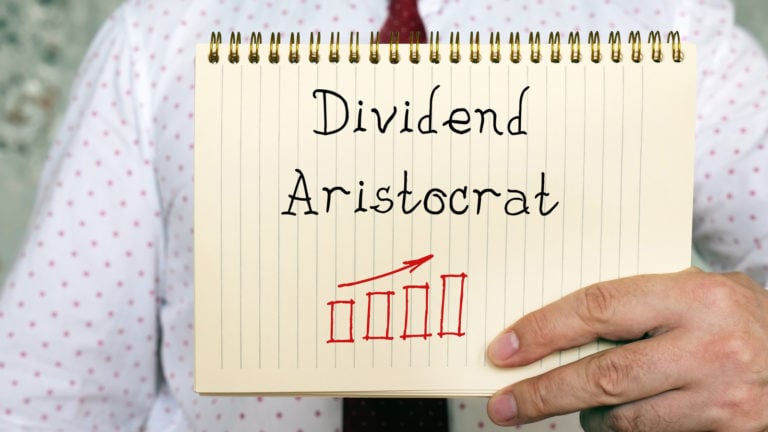Stocks with long histories of dividend growth have stood the test of time. Among the most striking examples of such reliability are dividend aristocrats, a group of just 68 stocks within the S&P 500 index that have raised their dividends for at least 25 consecutive years.
These dividend growth stocks have outlasted competitive threats, navigated recessions and kept raising dividends through it all. Better still, we can narrow this list of excellent dividend stocks to just those with yields above 4%.
In this article, we’ll take a look at three of the highest-yielding dividend aristocrats with safe dividends.
T. Rowe Price (TROW)

T. Rowe Price (NASDAQ:TROW), founded in 1937 and headquartered in Baltimore, Maryland, is one of the U.S.’s largest publicly traded asset managers. The company provides a broad array of mutual funds, sub-advisory services and separate account management for individual and institutional investors, retirement plans and financial intermediaries. T. Rowe Price had assets under management of $1.54 trillion as of the end of 2023.
For Q2 of this year, TROW reported that revenue of $1.73 billion increased 7.5% year-over-year and net client outflows were $3.7 billion for the quarter. The ETF business had $5.3 billion of assets under management as of the end of the quarter, and adjusted earnings per share increased 12% to $2.26.
In the past 10 years, the company has grown earnings per share by an average compound rate of 6% per annum. Asset managers like T. Rowe have low variable costs. As a result, higher revenues, driven primarily by increasing assets under management, allow for margin expansion and attractive earnings growth rates. Assets under management grow in two basic ways: increased contributions and higher underlying asset values.
While asset values are finicky, the trend is upward over the long-term. On the contribution side, T. Rowe Price’s strong past performance is a key selling point and could attract customers going forward. In addition, T. Rowe has another growth lever in the way of share repurchases.
This is a shareholder-friendly company when it comes to returning cash. In January, T. Rowe Price declared a $1.24 quarterly dividend, representing a 1.6% increase and marking the company’s 38th year of increasing its payout. With a 2024 expected dividend payout ratio of approximately 59%, TROW’s dividend is secure, with room for continued increases. TROW stock currently yields 4.3%.
Chevron (CVX)

Chevron (NYSE:CVX) is one of the largest oil majors in the world, with a market cap of $300 billion. In fact, the company is an integrated oil and gas super-major, although approximately 74% of total earnings come from its upstream segment. Chevron is more leveraged to the oil price, with a 59/41 oil-to-gas-production ratio.
The company will post strong production growth this year largely due to its recent acquisition of PDC Energy and a pending acquisition of Hess (HES). Last October, Chevron agreed to acquire Hess for $53 billion in an all-stock deal. Chevron will purchase the highly profitable Stabroek block in Guyana as well as the Bakken assets, greatly enhancing its production and free cash flow. Sustained production growth will come from the Permian Basin. The company has more than doubled the value of its assets in the Permian in the last five years thanks to new discoveries and technological advances. As Chevron is fully valued, we view the all-stock deal as attractive for Chevron.
According to first quarter results reported in late April, the price of oil improved due to the Ukrainian crisis and the production cuts of OPEC and Russia. However, gas prices decreased due to warm winter weather. As a result, earnings per share dipped 17% over the prior year’s quarter, from $3.55 to $2.93, though they exceeded the analysts’ consensus by 3 cents.
This dividend aristocrat’s main competitive advantage is its size and industry position. Chevron achieved record free cash flows in 2021-2023, and its strong cash flow has allowed the company to raise its dividend each year for 37 consecutive years. This includes recessions, which is notable for a cyclical industry. Having raised its dividend by 8% this year, Chevron’s stock currently yields 4.2%.
Amcor (AMCR)

Amcor (NYSE:AMCR) is one of the world’s most prominent designers and manufacturers of packaging for food, pharmaceutical, medical and other consumer products. The company emphasizes making responsible packaging that is lightweight, recyclable and reusable.
Third quarter results reported in April demonstrated resilience despite market challenges, with notable increases in key financial metrics. GAAP diluted EPS reached 12.9 cents, with GAAP net income hitting $187 million. Adjusted EBIT rose by 3% to $397 million on a comparable constant currency basis, while adjusted EPS saw a 1% increase to 17.8 cents.
The company’s improved financial performance in the third quarter was attributed to robust underlying business growth and enhanced earnings leverage. Despite a decline in overall volumes compared to the previous year, Amcor exceeded expectations, with sequential volume improvement observed across various categories and regions.
Looking ahead, Amcor anticipates sustained growth, with adjusted EPS for the fiscal year projected to range from 68.5 to 71 cents per share and adjusted free cash flow estimated at approximately $850 million to $950 million. The company plans to allocate around $70 million towards share repurchases as part of its ongoing program.
Of our dividend aristocrats, AMCR stock has the highest yield — 4.9%.
On the date of publication, Bob Ciura did not hold (either directly or indirectly) any positions in the securities mentioned in this article. The opinions expressed in this article are those of the writer, subject to the InvestorPlace.com Publishing Guidelines.
On the date of publication, the responsible editor did not have (either directly or indirectly) any positions in the securities mentioned in this article.
